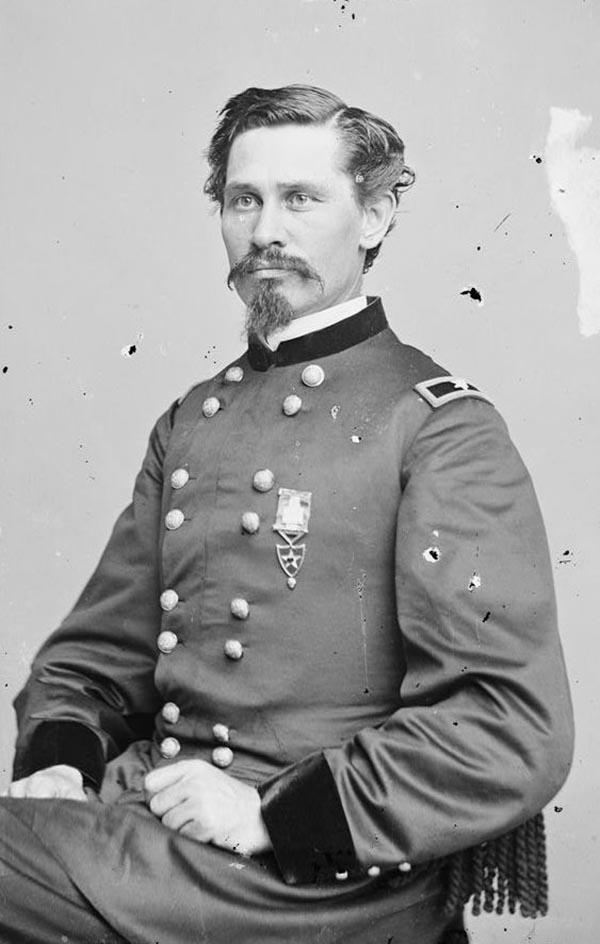Orlando Metcalfe Poe (March 7, 1832 - October 2, 1895) was an officer and engineer in the United States Army and an American Civil War veteran. Poe was born in Navarre, Ohio, and attended the United States Military Academy, from which he graduated sixth in his class in 1856. After graduating, he served as an assistant topographical engineer on the survey of the northern Great Lakes. At the beginning of the American Civil War, Poe helped organize the volunteers from Ohio and later was named to Major General George B. McClellan's staff in western Virginia. Poe also assisted in organizing the defense of Washington, D.C. He was promoted to colonel of volunteers in September 1861 and put in command of the 2nd Michigan Volunteer Infantry Regiment. He commanded this regiment from Yorktown through the Battle of Seven Pines during the Peninsula Campaign. Because of his success as a commander, Poe was given field command of as brigade before the Northern Virginia Campaign of 1862, which he commanded at the Second Battle of Bull Run and the Battle of Chantilly. His brigade was also present, though not active, at the Battle of Fredericksburg. Poe was appointed brigadier general of volunteers, though Comgress rejected his appointment and he reverted to his old rank of lieutenant in the regular army. Even so, he was soon promoted to captain and transferred to the Western Theater, where he served as chief engineer of the XXIII Corps. In this capacity, Poe played a key role in the defense of Knoxville, Tennessee. Due to his contributions at Knoxville, Major General William T. Sherman selected Poe as his chief engineer in 1864. While serving with Sherman, Poe oversaw the burning of Atlanta, personally directing the orderly disassembly and destruction of rail depots, roundhouses, arsenals, and storage areas that could have provided any military aid to the enemy. He continued to serve as chief engineer during Sherman's March to the Sea, an operation in which he proved to be 'indispensable' according to Sherman, and continued with Sherman through the Carolinas Campaign until the end of the war. After the war, Poe became the Lighthouse Board's chief engineer. Poe was promoted to Chief Engineer of the Upper Great Lakes 11th Lighthouse District in 1870, during which time he designed eight 'Poe style lighthouses' and oversaw the construction of several. He is best known for the Spectacle Reef Light on Lake Huron, which has been called the 'best specimen of monolithic stone masonry in the United States' and 'one of the greatest engineering feats on the Great Lakes.' Poe returned to General Sherman's staff in 1873, serving as his aide-de-camp until 1883, during Sherman's tenure as the commanding general of the U.S. Army. Poe left Sherman's staff in 1883 when he was named Superintending Engineer of Improvement of Rivers and Harbors on Lakes Superior and Huron, during which time he helped develop the St. Marys Falls Canal. To this day, many consider the crowning achievement of his career the design and implementation of the first Poe Lock in the American Too Locks in Sault Ste. Marie. This system of locks was instrumental in making it possible for the shipping industry to reach into the upper Great Lakes, which played a pivotal role in the creation of the basic steel industry in the United States. Poe's original lock was replaced in the early 1960s with a much larger, more modern one, but the new lock was renamed the Poe Lock and serves the largest Great Lakes freighters to this day.


